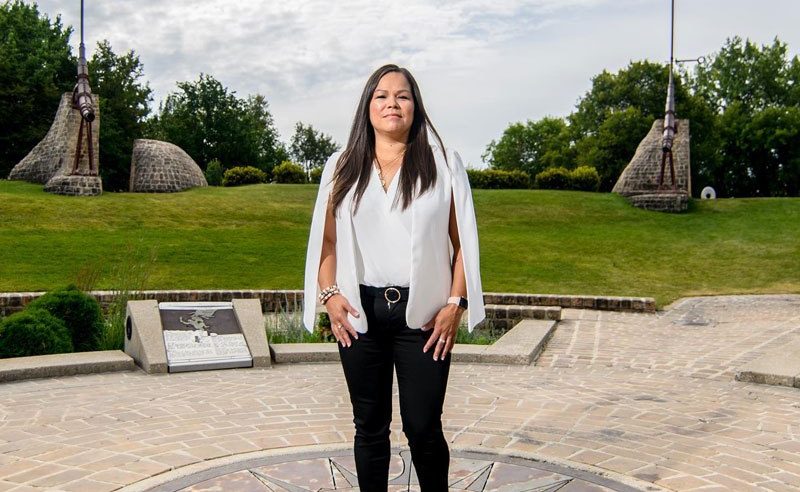The chair of the Winnipeg Chamber of Commerce says a new tool, released in recognition of National Indigenous People’s Day, is intended to help local businesses navigate the calls to action set out by the federal Truth and Reconciliation Commission.

Jessica Dumas, the first Indigenous woman to head the chamber, said the document is a roadmap that can help businesses set off in the right direction when it comes to their relationships with the Indigenous community in the city.
The commission released a list of 94 calls to action in 2015, and the chamber — a signatory to 2016’s Winnipeg Indigenous Accord — is offering resources to businesses that want to start implementing some of those recommendations.
“The document is really about giving people a bunch of places to start,” said Dumas.
“What I have seen since the Truth and Reconciliation Commission calls to action were released, is people want to do something but they’re having this conversation of, ‘I don’t know what to do and I don’t want to do anything wrong so I’m not going to do anything.’

Get breaking National news
“That conversation doesn’t help us move forward in educating people or employing people.”
Dumas said that while recent world events are certainly increasing people’s awareness of systemic racism and the need for equality, reconciliation between Canada’s Indigenous and non-Indigenous people is an ongoing work in progress.
“It’s timely because it’s work that can be done all the time,” she said.
“It’s work that the Truth and Reconciliation Commission did in 2015, and it’s work that the Indigenous community has done for years and years.
“I always say that the Indigenous community never stopped reconciling.
“These conversations for us have never stopped… This has always been a part of the communication that Indigenous leaders are having within their communities, so to hear that it’s being more vocalized in the non-Indigenous community is good news.”
The roadmap, which is available to the public via the chamber’s website, covers key strategies businesses can take on, including strategies to educate staff on Indigenous history and culture, and enhancing HR practices to hire and retain more Indigenous employees.
“The document is available to everyone, so it’s not just for our members,” said Dumas.
“It’s a document that you can go onto our website have a look at it and see where you are, where you want to start.”









Comments